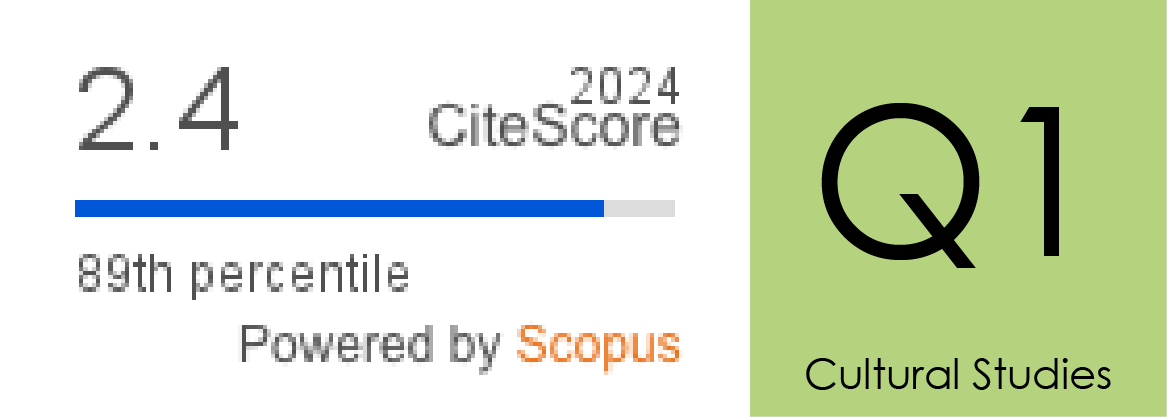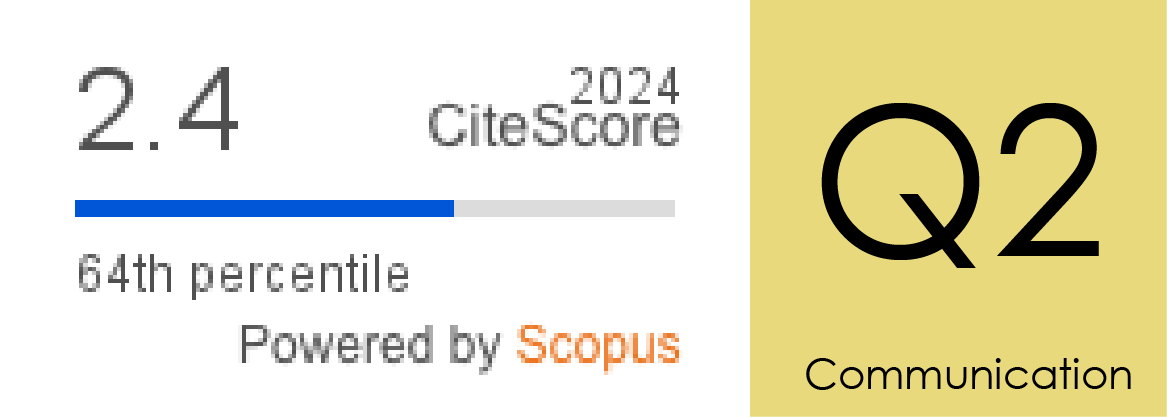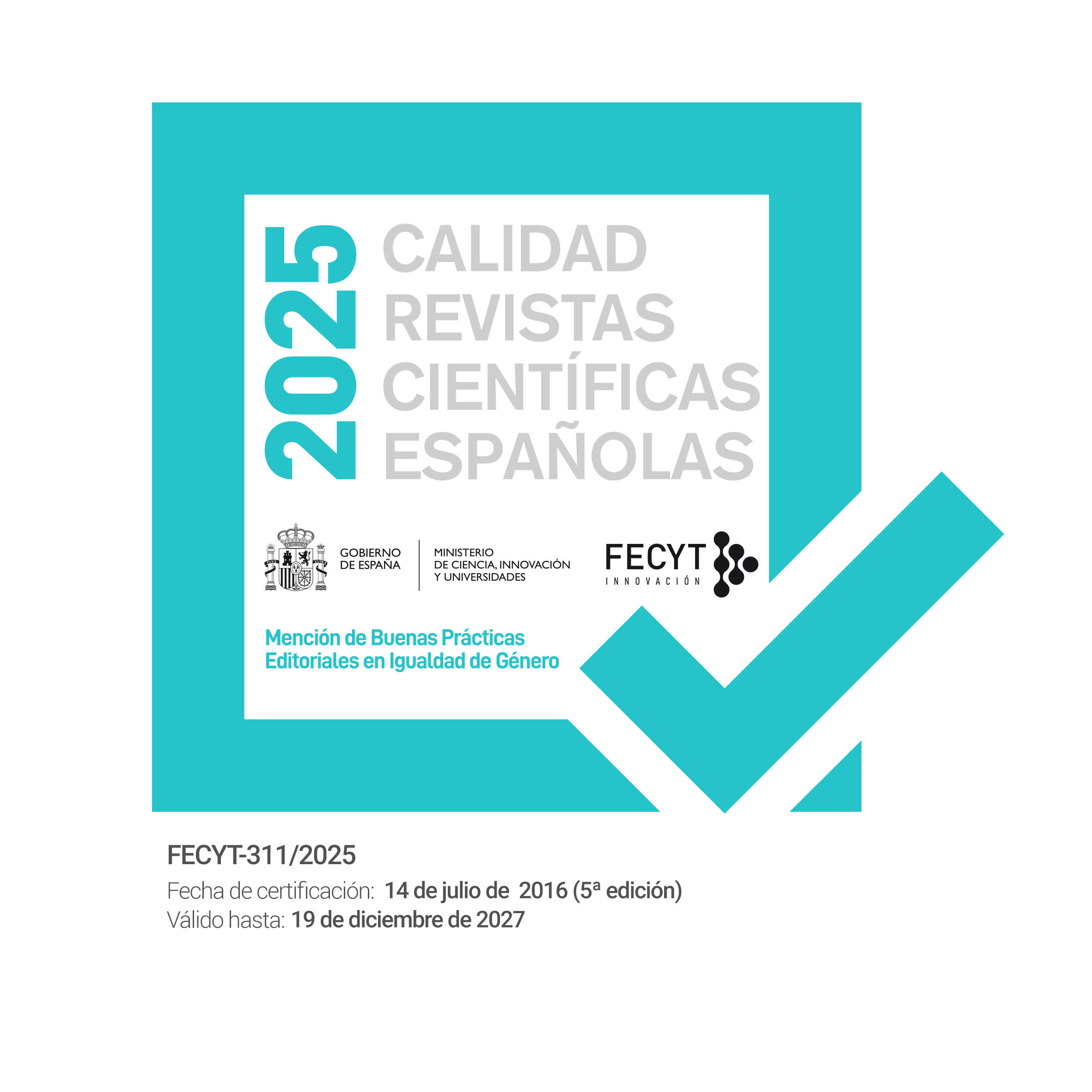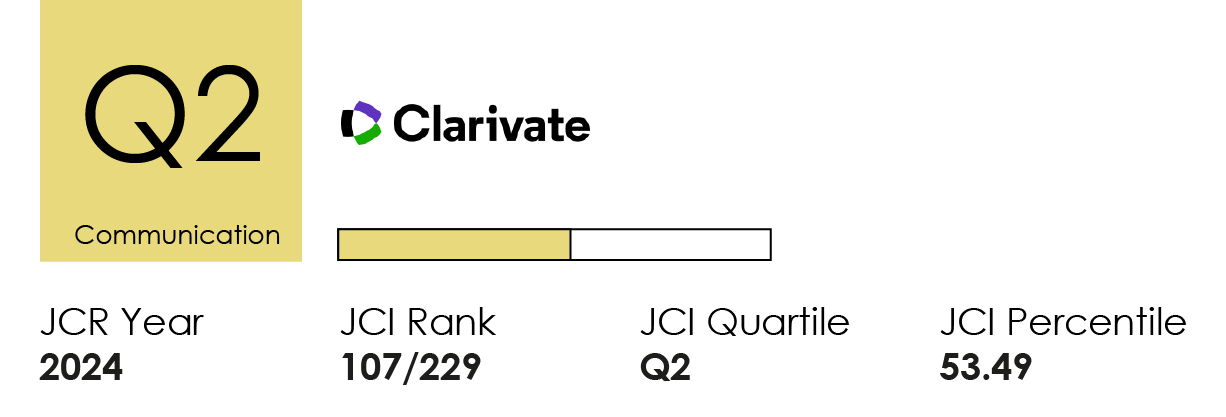Marketing y materialidad en la música popular transmedia de Gorillaz Plastic Beach
DOI:
https://doi.org/10.14198/MEDCOM2017.8.2.5Palabras clave:
Háptica, Transmedia, Materialidad, Música popular, Virtualidad, Eco-críticaResumen
El entramado de entretenimiento hilado por las diversas narrativas de material transmedia contiene pocos ejemplos basados en la música popular. Sin embargo, los que existen proporcionan una interesante oportunidad para profundizar en las diferencias que éstos presentan frente a sus equivalentes en formato visual (cine, TV). Un ejemplo particularmente interesante es el de la banda Gorillaz y el álbum Plastic Beach (2010), rico en medios visuales típicos de la cultura de la música popular como son los dibujos y los videos musicales animados. La materialidad tangible de este ejemplo surge del principal tema de índole ecológica del álbum: el desecho de residuos plásticos. Utilizando métodos de análisis de los textos originales, y una encuesta de las prácticas de los aficionados, este ensayo teoriza sobre la posibilidad de una relación material y háptica con estos visuales; posibilidad que de algún modo se contradice con la actual tendencia de disminución de consumibles/formatos físicos en la música popular. Además, concluye que los seguidores de la banda interactúan con sus propias prácticas creativas, creando y jugando con objetos hechos a mano o personalizados inspirados en Plastic Beach, activando el potencial de comercialización que existe inexplotado en Plastic Beach. Aunque las aplicaciones actuales de esta investigación son limitadas debido a la baja frecuencia de ejemplos en la música popular transmedia, esto indica un posible camino a seguir, al menos teóricamente, en la elaboración de estrategias de marketing específicas para esta forma de creatividad.
Financiación
City, University of LondonCitas
Barrett, C. (03/06/2010). Releases: The Beach Boys. Music Week.
Beat13 [Vimeo]. (2010). Some Kind of Nature (Live Projections) [Vídeo]. Recuperado de https://goo.gl/b6654L
biaranhuscus [YouTube]. (26/022012). Gorillaz - Dirty Harry (Stop Motion Video) [Vídeo]. Recuperado de https://goo.gl/Q4OSxk
Bødker, H. (2004). The changing materiality of music. Denmark: CFI, Center for Internetforskning, Institut for Informations-og medievidenskab.
Dean, W. (20/02/2012). Trending: Are Gorillaz really ‘selling their soles’? Independent. Disponible en https://goo.gl/ALk7QB
Eskelinen, M. (2001). The Gaming Situation. The International Journal of Computer Game Research. 1(1). Disponible en https://goo.gl/o1UcMK
Genette, G. (1997). Paratexts: Thresholds of Interpretation. Cambridge: Cambridge University Press.
Getmemedia (15/03/2012). Case study: Gorillaz’ Plastic Flowerz. Disponible en https://goo.gl/OK1zmL
Gorillaz [DVD]. (2010). The Making of Plastic Beach. UK: Parlophone.
Gorillaz & Reed, L. (2010). Some Kind of Nature. London: EMI Music.
Gorillaz [Facebook]. (02/11/2010). Who is the evangelist? Disponible en https://goo.gl/CUXiov
Gray, J. (2010). Show Sold Separately: Promos, Spoilers and other Media Paratexts. NY: New York University Press.
The Guardian (2010). Gorillaz takeover. Dispoible en https://goo.gl/aqSgnx
Harris, J. (07/04/2010). Damon Albarn: Gorillaz, heroin and the last days of Blur. The Guardian. Disponible en https://goo.gl/3vaDxE
Heljakka, K. (2013). Principles of adult play (fullness) in contemporary toy cultures: from wow to flow to glow. Helsinki: Aalto University. Disponible en https://goo.gl/ACaG4D
Heljakka, K. (2015). From toys to television and back: My Little Pony appropriated in adult toy play. Journal of Popular Television, 3(1), 99-109. http://dx.doi.org/10.1386/jptv.3.1.99_1
Hills, M. (2011). Cultographies: Blade Runner. New York: Wallflower/Columbia University Press.
Jack (16/08/2013). Mikie Graham – Gorillaz Plastic Beach Edition for Music to My Ears. Vinyl Pulse. Disponible en https://goo.gl/2J4Rzq
Jenkins, H; Ford, S. & Green, J. (2013). Spreadable Media: Creating Value and Meaning in a Networked Culture. NY: New York University Press.
kody morris [YouTube]. (2012). Kong Studios Tour (HD) [Vídeo]. Recuperado de https://goo.gl/0qdaL8
Korsgaard, M. B. (2013). Music Video Transformed. En Richardson, J.; Gorbman, G. & Vernallis, C. (Eds.), The Oxford Handbook of New Audiovisual Aesthetics (pp. 501-520). NY: Oxford University Press.
Kozinets, R. V. (2002). The field behind the screen: using netnography for marketing research in online communities. Journal of marketing research, 39(1), 61-72. http://dx.doi.org/10.1509/jmkr.39.1.61.18935
Lang, J. & Lang, R. (2008). Soldier’s Wreath [Photograph].
Lastowka, G. (2011). Minecraft as web 2.0: Amateur creativity & digital games. http://dx.doi.org/10.2139/ssrn.1939241
Leavenworth, M. L. (2014). Transmedial narration and fan fiction: the storyworld of The Vampire Diaries. En Ryan, M-L & Thon, J. (Eds.), Storyworlds Across Media: Towards a Media Conscious Narratology (pp. 315-331). Lincoln: University of Nebraska Press.
Marks, L. (2002). Touch: Sensuous theory and multisensory media. Minnesota: University of Minnesota Press.
Miller, D. (2008). The Comfort of Things. Cambridge: Polity Press.
NME (27/12/2007). Blur’s Damon Albarn calls for the end of ‘The X Factor’. New Musical Express. Disponible en https://goo.gl/k6XdGk
Panicatthesocialgathering [YouTube]. (20/01/2011). Gorillaz rhinestone eyes music video [Vídeo]. Recuperado de https://goo.gl/ehq2bm
Paphides, P. (10/05/2010). Monkey see, monkey do, monkey tour: the Gorillaz are back. The Times. Disponible en https://goo.gl/MLHP2c
Podlas, K. (2007). Homerus Lex: Investigating American Legal Culture through the Lens of The Simpsons. Seton Hall Journal of Sports and Entertainment Law, 17, 93-133. Disponible en https://goo.gl/5bV58Y
Ryan, M-L. (2004). Introduction. En Ryan, M-L. (Ed.), Narrative Across Media: The Languages of Storytelling (pp. 1-40). Nebraska: University of Nebraska Press.
Ryan, M-L. (2009). From Narrative Games to Playable Stories. Toward a Poetics of Interactive Narrative. Storyworlds: A Journal of Narrative Studies, 1, 43-59. http://dx.doi.org/10.1353/stw.0.0003
Ryan, M-L. (2014). Story/Worlds/Media: Tuning the Instruments of a Media-Conscious Narratology. En Ryan, M-L. & Thon J-N. (Eds.), Storyworlds across Media: Toward a Media-Conscious Narratology (pp.25-50). Lincoln: University of Nebraska Press.
Seiter, E. (2004). The Internet Playground: Children’s Access, Entertainment, and Mis-Education. NY: Peter Lang Publishing.
Sexton, P. (2006). Gorillaz’ tactics prove vision can overtake reality. Financial Times. Disponible en https://goo.gl/aGVKWS
Straw, W. (2002). Music as commodity and material culture. Repercussions, 7(8), 147-172.
Straw, W. (2009). The Music CD and Its End. Design and Culture: The Journal of the Design Studies Forum, 1(1), 79-92. http://dx.doi.org/10.2752/175470709787375751
Švankmajer, J. (2014). Touching and Imagining: An Introduction to Tactile Art. London and New York: I. B. Tauris.
Estadísticas
Publicado
Cómo citar
Número
Sección
Licencia
Derechos de autor 2017 Alex-David Jeffery

Esta obra está bajo una licencia internacional Creative Commons Atribución-CompartirIgual 4.0.
Los autores y autoras que publican en esta revista están de acuerdo con los siguientes términos:
1 Derechos de autor. Los autores y autoras conservan sus derechos de autor, aunque ceden a la revista de forma no exclusiva los derechos de explotación (reproducción, distribución, comunicación pública y transformación) y garantizan a esta el derecho de primera publicación de su trabajo, el cual estará simultáneamente sujeto a la licencia indicada en punto 2. Los autores pueden establecer otros acuerdos adicionales para la distribución no exclusiva de la versión de la obra publicada en la revista, siempre que exista un reconocimiento de su publicación inicial en esta revista.
© Los autores.
2 Licencia. Los trabajos se publican en la revista sujetos a la licencia de Reconocimiento 4.0 Internacional de Creative Commons (CC BY 4.0); los términos se pueden consultar en https://creativecommons.org/licenses/by/4.0/
Esta licencia permite a terceros compartir (copiar y redistribuir el material en cualquier medio o formato) y adaptar (remezclar, transformar y crear a partir del material para cualquier finalidad, incluso comercial), siempre que se reconozca la autoría y la primera publicación en esta revista (Revista Mediterránea de Comunicación (RMC) / Mediterranean Journal of Communication (MJC), Universidad de Alicante, DOI de la obra), se proporcione un enlace a la licencia y se indique si se han realizado cambios en la obra.
3 Política de autoarchivo. Se recomienda a los autores que difundan sus trabajos a través de Internet para favorecer una circulación y difusión más rápidas y, con ello, un posible aumento en la citación y alcance entre la comunidad científica y académica, en las siguientes condiciones:
No se permite a los autores depositar en un repositorio institucional o temático, página web propia, etc., las versiones preprint (versión antes de ser evaluada) o postprint (versión evaluada y aceptada para su publicación) de sus trabajos antes de su publicación, pero sí el artículo final publicado (versión del editor).













